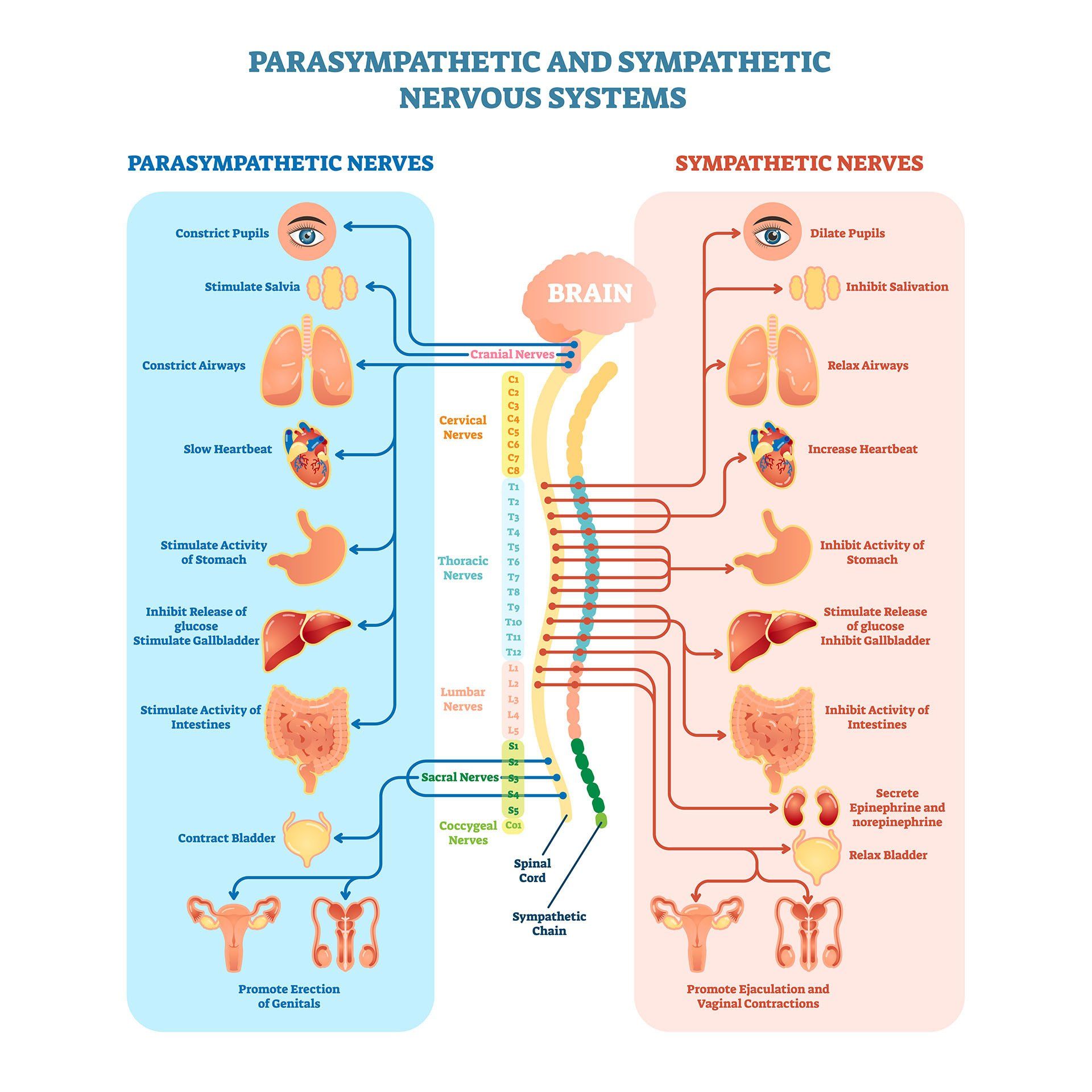Stress measurement / Heart rate variability (HRV)
Stress can be measured!
Our body is well equipped for its original life in the steppe for short Stressful moments – for example when we encounter the famous sabre-toothed tiger, a storm or fire threatens.
Nowadays, saber-toothed tigers are much rarer, and in the western world, almost the entire population is provided for with their basic needs such as shelter, water and food. So you would think that nowadays we no longer have any stress in the sense of fear for survival.
The exact opposite is the case - nowadays we are not only exposed to different stressors, but also to much more frequent stressors. It is no longer our lives that are threatened, but other values such as our self-worth or our position, the achievement of our goals or our belonging to others.
Effects on the body
These permanent tensions lead to changes in our body, similar to the permanent tension of a muscle.
In particular, overstimulation of the central nervous system leads to a disturbed ability to regulate all twelve body systems.
In particular, the so-called "parasympathetic nervous system" - the part of the central nervous system that is responsible for relaxation and regeneration - no longer reacts as quickly and as well as it should. This reaction speed of the parasympathetic nervous system can be measured and conclusions can be drawn from it about the stress level of the respective test subject.

Process of a stress measurement
The test subject is connected to the measuring device using two wrist clips and an ear clip. This makes it possible to carry out a five-minute short-term measurement of the status quo and a one-minute measurement of the so-called "respiratory sinus arrhythmia", the adaptation of the cardiovascular system to breathing.
Based on this ECG measurement and the pulse wave, conclusions can be drawn about the mental and physical stress the subject has been under over the last weeks, months or even years.
If we have a normal weight and a good constitution and are able to get into action as well as into regeneration, eat well and exercise regularly, this is reflected above all in our heart rate - a good resting heart rate is between 60-80 beats per minute.
When we breathe in, our pulse increases; when we breathe out, our pulse decreases. If this regulation on the heart-brain axis works perfectly, we speak of good regulation ability.
If, on the other hand, we are permanently in stress mode, the ability to regulate is disturbed and there are clear changes in the central nervous system, more precisely in the reaction speed of the parasympathetic nervous system, which can be made visible using HRV measurement.
What is being measured?
Based on the ECG and the pulse wave, three factors of the mean heart rate are measured, namely
the number of heartbeats per measured period of time (partial information of the resting pulse):
1. Tone:
The
average heart rate provides information about the activity of the parasympathetic nervous system. At rest, our body's own braking and regeneration system (parasympathetic nervous system) is the active part of our heart-brain axis. Only an efficient parasympathetic nervous system can optimally control the body's processes and enables our vital adaptability.
A good parasympathetic tone is expressed in a lower heart rate. An optimal, average heart rate is 60-80 beats per minute.
2. The flexibility:
The stronger the oscillation of the deflection – i.e. the increase in the heartbeat when inhaling and the decrease when exhaling – the greater the adaptability of the cardiovascular system and thus of the parasympathetic nervous system.
Rapid changes in heart rate at rest are an expression of a well-functioning “internal brake”. They are a characteristic of rapid information processing and a sign of good adaptability.
3. The dynamics:
An essential characteristic of an efficient heart-brain axis is the speed with which information processing and body regulation occurs.
The fewer heartbeats the body needs to reach the lowest value when exhaling, the faster the parasympathetic nervous system reacts.
Similar to the braking test in a car, the faster the system comes to a stop, the more powerful the built-in brake is.


HRV measurement result protocol
The graph on the left shows the result protocol of a bad RSA measurement.
The three measured values mentioned above are all below the age average determined in many reference measurements and are therefore positioned in the red area.
People who are permanently in stress mode and hardly have any regeneration phases show such values and are at great risk to their health.
For example, if the average heart rate is over 80, the risk of diseases such as cardiovascular disease increases by 5 times!!!
People who have already reported a poor constitution before the measurement will receive an overview of their body status based on scientifically sound data.
In our experience, people with a poor test result take their health condition much more seriously and are more willing to take further steps to improve their health.
Even skeptics and scientifically oriented people can be better convinced of the importance of stress management using HRV measurement.
Goals of HRV measurement
If the test subject has a poor measurement result, it makes sense to work together to develop a concept that is suitable for everyday use and how the mental and thus also physical stress can be reduced.
A stress issue must always be viewed holistically and possible starting points include stress management in particular, but also the optimization of nutrition, exercise and sleep.
In the area of stress management we work on four levels:
- Instrumental stress management
- Cognitive stress management
- Regenerative stress management
- Emotional stress management
You can find out more about stress management on the "Personal coaching".


